The global aramid fibers market is estimated to be valued at USD 3.79 Bn in 2024 and is expected to reach USD 6.97 Bn by 2031, growing at a compound annual growth rate (CAGR) of 9.1% from 2024 to 2031.
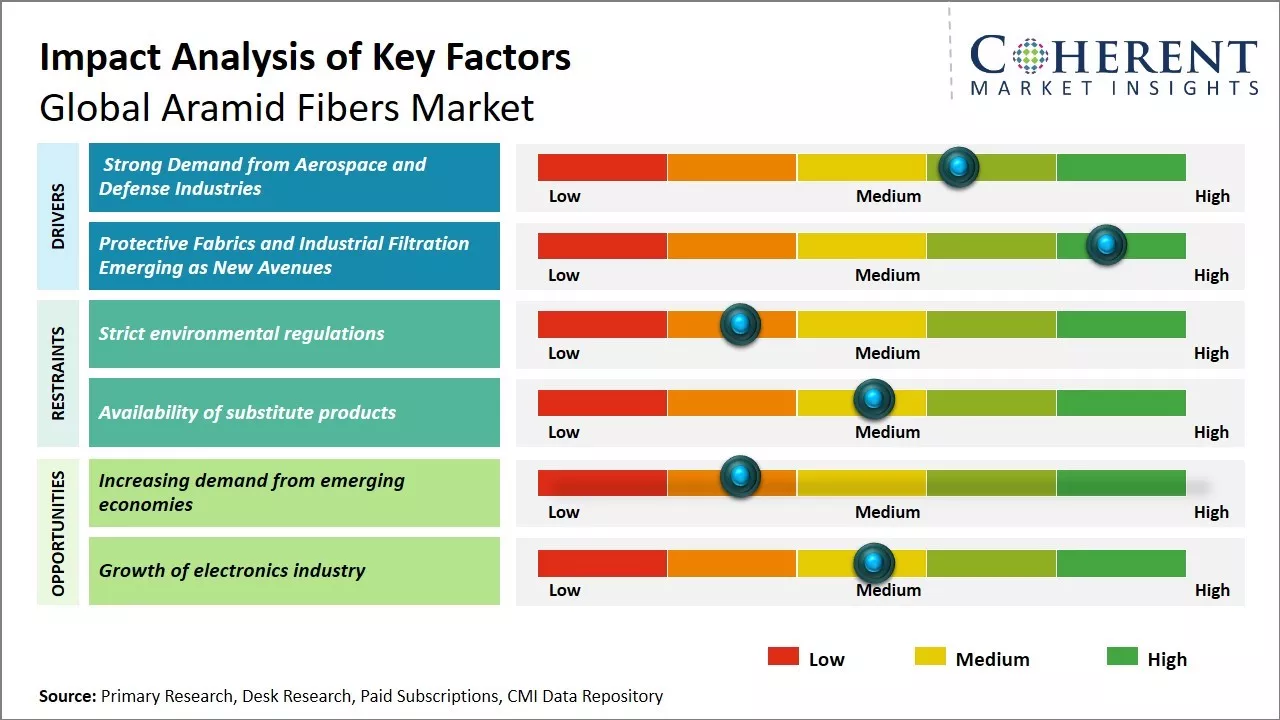
To learn more about this report, request a free sample copy
The market is witnessing positive trends due to increase in demand from the automotive and ballistic protection sectors. Aramid fibers are increasingly being used in automotive applications such as tires, airbags, hoses, etc. due to their high strength to weight ratio property. There has also been a rise in the usage of aramid fabrics for ballistic protection equipment such as bulletproof vests, helmets, and armor plates for military and law enforcement agencies. Additionally, growing infrastructure development activities are also driving demand for aramid fibers which are used for the manufacture of construction materials, optical fiber cables, and other industrial applications.
Strong Demand from Aerospace and Defense Industries
The aerospace and defense industries have always pushed the boundaries of innovation and are early adopters of advanced materials that can deliver strength, stiffness and heat resistance. Aramid fibers have found widespread usage in these industries due to their high tensile strength and heat resistance properties. They are used to manufacture various components such as aircraft fuselages, engine mounts, rotor blades, radar domes and more. With rising global defense budgets and increasing passenger and cargo traffic worldwide, demand from the commercial aviation sector as well as the defense sector continues to grow steadily. Many new aircraft programs are ongoing or have been announced recently which will fuel the increasing usage of composites containing aramid fibers. Military agencies across countries are procuring new fighter jets, transport aircraft, helicopters and missiles. Composite materials allow manufacturers to build lighter yet stronger structures, enabling these aircraft and platforms to travel farther distances or carry heavier payloads. The demand for upgraded and newer platforms also needs replacement of parts and sub-assemblies which stimulates the aramid fibers market. With geo-political risks increasing globally, defense modernization remains a priority especially for developed as well as emerging economies. This augurs well for sustained revenues for aramid fiber producers from their longstanding customer base.
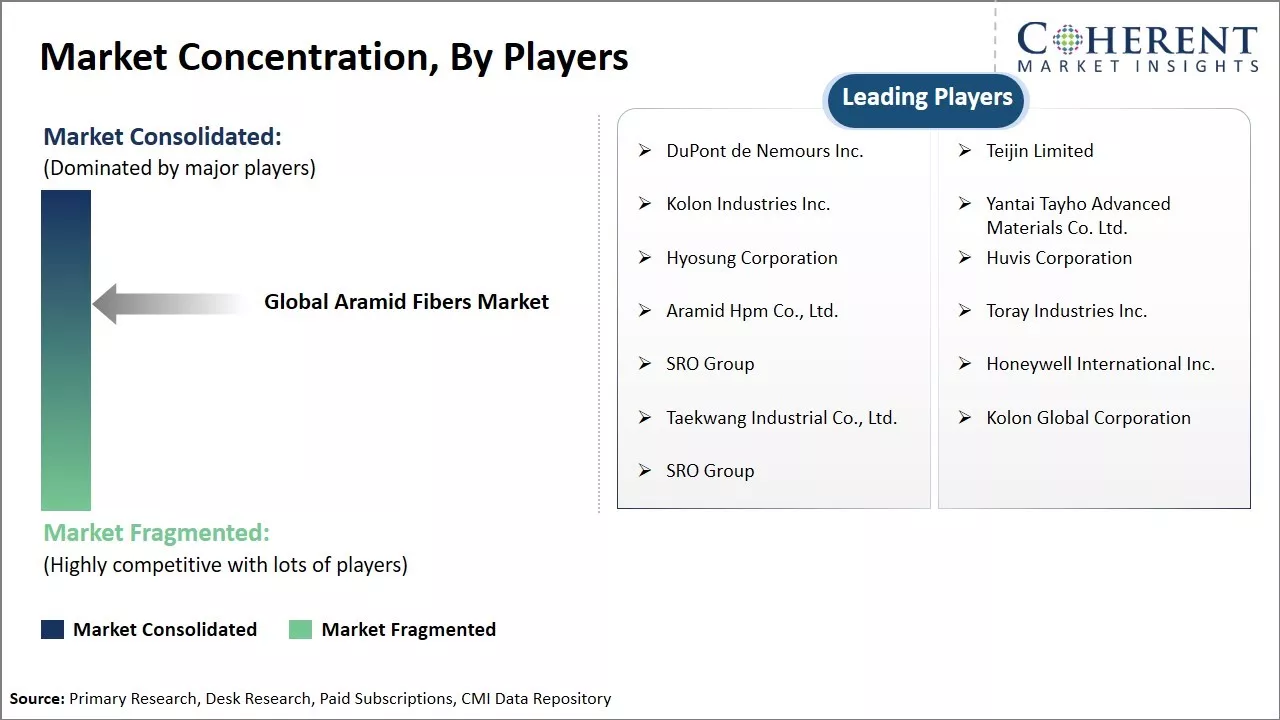
To learn more about this report, request a free sample copy
Protective Fabrics and Industrial Filtration Emerging as New AvenuesWhile aramid fibers have long been valued for their use in technical textiles and composites, new application areas are opening up as material properties are better explored. Their high strength and heat resistance makes aramid an ideal candidate for protective clothing, often combined with other fibers. Industries like oil & gas, manufacturing and fire-fighting require durable and heat-shielding garments and equipment to safeguard workers from hazards. Stringent safety regulations and awareness about personnel protection are driving demand from this sector. Industrial processes also seek filtration media that can operate at high temperatures and resist abrasion. Aramid fiber filters are gaining preference for collecting fine dust particles as well as removing oil and liquid contaminants. Areas such as coal power generation and metal processing require filters that can withstand demanding conditions for long useful lives. Aramid fibers effectively meet the performance needs of these applications compared to alternatives. With emerging economies industrializing rapidly, there will be growing need for advanced technical textiles and high-filtration nonwovens duly complemented by aramid.
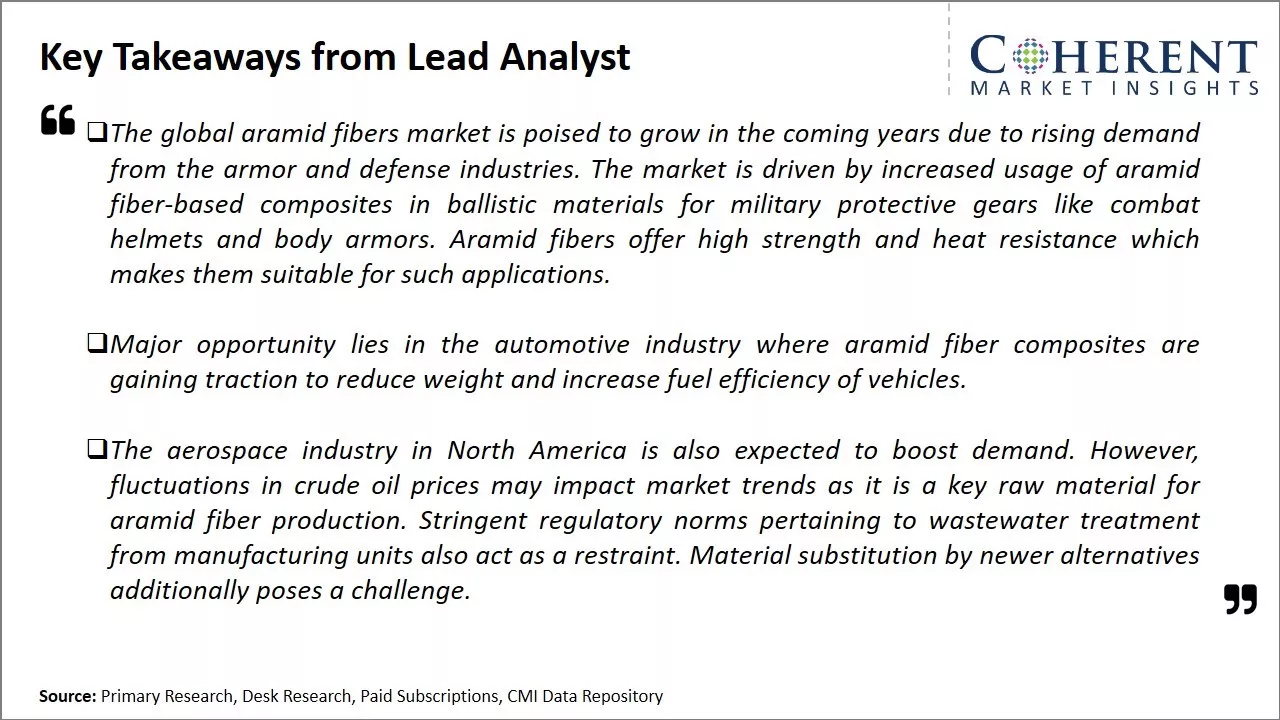
To learn more about this report, request a free sample copy
Challenges: Strict environmental regulationsStrict environmental regulations around the world have increased production costs. Additionally, disposal of aramid fiber waste requires special treatment due to their non-biodegradable nature. Substitute materials like carbon fibers and ultra-high molecular weight polyethylene provide competition. Volatility in crude oil prices affects the key raw material. Market saturation in developed nations has slowed the demand growth.
Opportunities: Increasing demand from emerging economies
Demand is increasing from emerging economies due to economic development. Applications in ballistic protection and nanocomposites are driving new product innovation. The automotive and aerospace industries continuously seek lightweight high-strength materials. Additionally, stable relationships with raw material suppliers ensure availability. Additionally, market players can target replacements for asbestos and other hazardous materials.
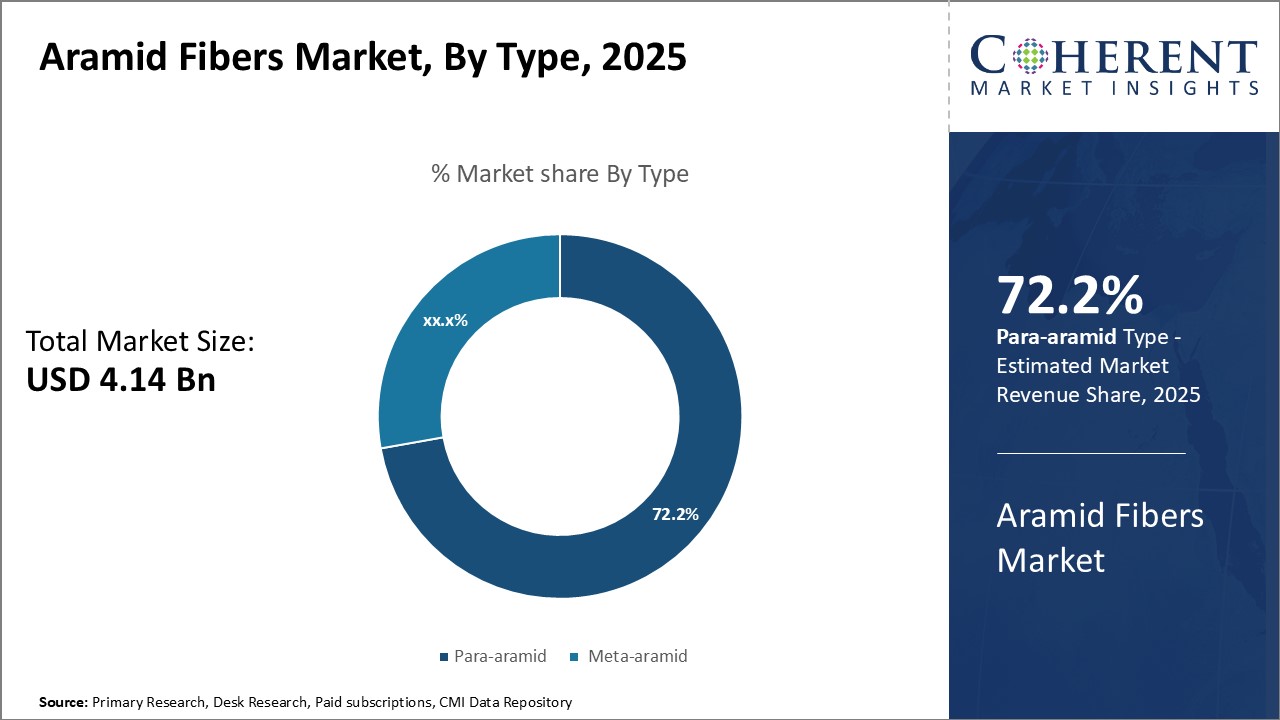
To learn more about this report, request a free sample copy
Insights by Type: In terms of type, Para-aramid contributes the highest share of the market owing to its ballistic resistance propertiesPara-aramid fibers have gained widespread adoption in the security and protection due to their exceptional ballistic resistance. It is expected to account for 71.7% of the market share in 2024. These fibers are able to effectively stop projectiles like bullets, shards of glass, and other damaging debris. The chemical structure of para-aramid fibers allows for extremely strong intermolecular bonds between polymer chains, resulting in an ultra-high tensile strength that makes it very difficult for high-velocity projectiles to penetrate. Para-aramid is commonly used in the fabrication of bulletproof vests, ballistic panels, and other personal protective equipment. Its lightweight yet robust ballistic resistance has made it an indispensible component in protecting law enforcement, military personnel, and private security guards. The functionality it provides in preventing lethal injuries from firearms is unmatched by other fiber materials. Recent advancements have improved para-aramid fibers' comfort and breathability as well, addressing prior limitations and expanding its use in protective apparel. Another major driver of para-aramid demand is its use in friction material applications such as brake linings and clutches. Its high thermal conductivity helps dissipate heat generated during heavy braking or clutch engagement. The outstanding heat resistance of para-aramid prevents brake pads and clutch facings from deteriorating prematurely due to excessive heat. This maintains consistent braking and clutch performance over the lifetime of the part. Its use enhances safety and reduces maintenance and replacement costs in applications ranging from aircraft and vehicles to industrial machinery. The inherently robust nature and consistently repeatable ballistic protection afforded by para-aramid fibers have cemented its primacy in the global aramid fibers market. Even as alternative fibers continue to emerge, para-aramid is likely to retain its strong market-leading position for the foreseeable future given its irreplaceable functionality in safety-critical industries.
Insights by Application: In terms of application, security & protection contributes the highest share of the market owing to increasing focus on protective equipment
The security and protection sub-segment in the application segment currently dominates the global aramid fiber demand, and it is projected to hold 36.7% of the market share in 2024. This is due to the vital role aramid fibers play in manufacturing body armor, bullet-resistant equipment, and infrastructure protection products. Government spending on military, law enforcement, and first responder safety equipment has contributed significantly to the segment's growth. In recent years, there has been an increased emphasis on providing reliable ballistic protection across high-risk professions and regions in response to escalating geopolitical threats and violent incidents. Another major factor is the surge in demand for bulletproof materials in the private security industry. Wealthy individuals, VIPs, cash-in-transit companies, and organizations operating in unstable areas are allocating greater budgets to protective gear. Aramid fibers allow manufacturers to develop lighter, more wearable solutions that meet rigorous ballistic standards without compromising mobility or durability. Infrastructure protection has also seen rising aramid fiber consumption. Applications include reinforced building panels, barriers, and shields deployed at government facilities, border checkpoints, and public event venues. Here, aramid's unique ability to withstand repeated impacts from explosives, projectiles, and other dangerous forces without degrading makes it the material of choice. Changing risk landscapes, as well as growth in private security spending worldwide, are likely to sustain the security and protection segment's dominant position as a major end-use sector. Aramid fiber manufacturers will accordingly prioritize innovations to further strengthen protective offerings in this lucrative application space.
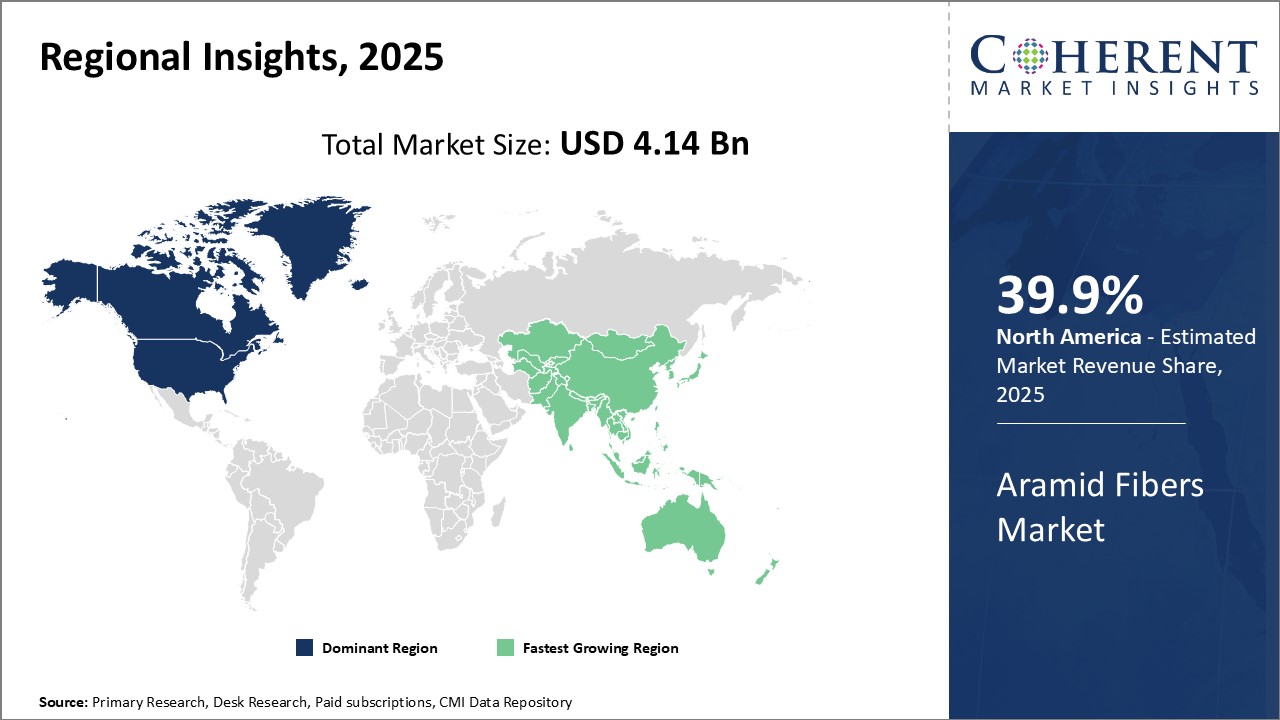
To learn more about this report, request a free sample copy
North America has established itself as the dominant region in the global aramid fibers market. The region is expected to account for 39.4% of the market share in 2024. With large automobile, aerospace, and defense industries, the region sees significant demand for aramid fibers which find key applications in these end-use industries. The presence of leading aramid fiber manufacturers such as DuPont and Teijin further strengthens the supply chain network in the region. The strong production capabilities and advantages of economies of scale allow North American manufacturers to consistently meet the bulk of regional demand in a cost-effective manner while also exporting to other parts of the world.
The Asia Pacific region has emerged as the fastest growing market for aramid fibers in recent years. Countries such as China, India, Japan, and South Korea are actively promoting their manufacturing sectors which has fueled the growth of end-use industries for aramid fibers. The expanding automotive production and rising aircraft demand from China has particularly boosted the Asia Pacific market. The numerous protection standards in the region regarding human safety have also increased the adoption of aramid fiber-based protective clothing and equipment. Additionally, several international aramid fiber producers are setting up local manufacturing plants in Asia Pacific to capitalize on the market potential as well as hedge risks from wage inflation and trade barriers in their home markets.
Aramid Fibers Market Report Coverage
| Report Coverage | Details | ||
|---|---|---|---|
| Base Year: | 2023 | Market Size in 2024: | US$ 3.79 Bn |
| Historical Data for: | 2019 To 2023 | Forecast Period: | 2024 To 2031 |
| Forecast Period 2024 to 2031 CAGR: | 9.1% | 2031 Value Projection: | US$ 6.97 Bn |
| Geographies covered: |
|
||
| Segments covered: |
|
||
| Companies covered: |
DuPont de Nemours Inc., Teijin Limited, Kolon Industries Inc., Yantai Tayho Advanced Materials Co. Ltd., Hyosung Corporation, Huvis Corporation, Aramid Hpm Co., Ltd., Toray Industries Inc., SRO Group, Honeywell International Inc., Taekwang Industrial Co., Ltd., Kolon Global Corporation, and SRO Group |
||
| Growth Drivers: |
|
||
| Restraints & Challenges: |
|
||
*Definition: The global aramid fibers market is a market for material science fibers that are heat resistant and ultra-strong. Aramid fibers are synthetic organic polymers used in aviation, ballistics, optronics, and many other applications due to their high strength, low density, and resistance to heat damage. The global aramid fibers market involves companies that research, develop, manufacture, and sell various types of aramid fibers which are used to reinforce composites and plastics for aerospace, automotive sectors.
Frequently Asked Questions
Joining thousands of companies around the world committed to making the Excellent Business Solutions.
View All Our Clients